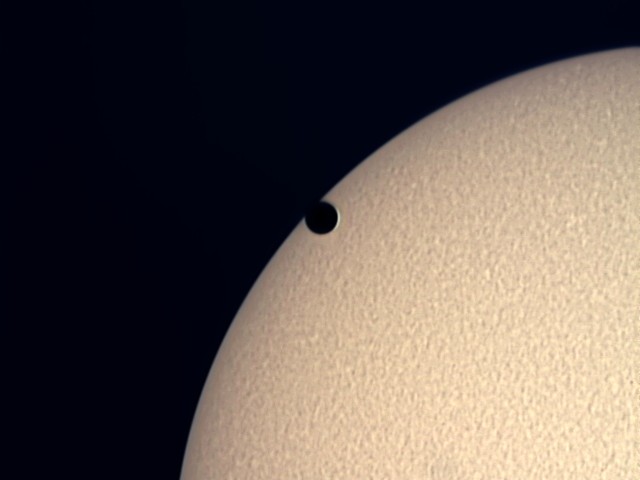
A transit of Venus is a rare event. Prior to June 8, 2004, the last time that a transit occurred was in 1882. Venus orbits the Sun 13 times in a little short of the time that it takes for Earth to make 8 orbits. Thus, there is an 8 year rhythm in the motion of Venus. However, it does not work out to be exactly eight years. Venus crosses its descending node, (when it could potentially pass between us and the Sun), about 1 day earlier each 8th year, and reaches inferior conjunction a little over two days earlier. A transit can only occur if Venus reaches inferior conjunction at the same time that it crosses its descending node (or ascending node).
On June 8, 2004, Venus crossed its descending node at inferior conjunction and a transit occurred. In the year 2012, 8 years later, Venus will reach its descending node and inferior conjunction 2.25 days earlier, and the node will have moved forward a bit. Venus will cross the Sun again from our point of view, but the path will lie 20 arc-minutes further north on the face of the Sun. Because the Sun is 32 arc-minutes wide, Venus will again cross the face of the Sun and we will be able to observe a transit. However, when the cycle repeats again 8 years later in 2020, the node will have moved too far foward of inferior conjunction for us to see a transit. After that, we will not see a transit again until the ascending node has moved far enough forward that it will coincide with inferior conjunction in the year 2117.
Because the geometry is such that the path of Venus appears displaced by about 20 arc-minutes each 8-year cycle, and the Sun is 32 arc-minutes wide, if the transit of Venus crossed the Sun dead center, we would not see a pair of transits spaced 8 years apart as we do now. This is because the path of Venus would initially miss the Sun by about 8 arc-minutes in the cycle that occurred 8 years before a transit in which Venus crossed the center of the Sun. The path would move 20 arc-minutes after 8 years, and during the next 8-year cycle following a dead center transit, Venus would again miss the face of the Sun by about 8 arc-minutes on the other side. Of course, if the path of the transit misses dead center by less than 8 arc-minutes, the same phenomenon takes place. This actually happened between 427 B.C. and 424 A.D.
Compare the size of Venus shown above with the size of Mercury when it transits the Sun.
This image was taken with a ToUcam web cam on a Takahashi FS-78 refractor at prime focus with a solar filter over the telescope. I captured this image from Port Louis on the Island of Mauritius in the Indian Ocean.
The Sun & Venus
June 8, 2004
Image by Sid Leach
Mauritius Island
Recent Images.
Complete list of images.
Description of equipment used to acquire images.
Home
Feedback and comments should go to Sid